Neutron stars are one of the most exotic objects in the Universe. They are born during supernova explosions and can manifest themselves in many interesting ways. They also have incredible properties that people usually know little about.
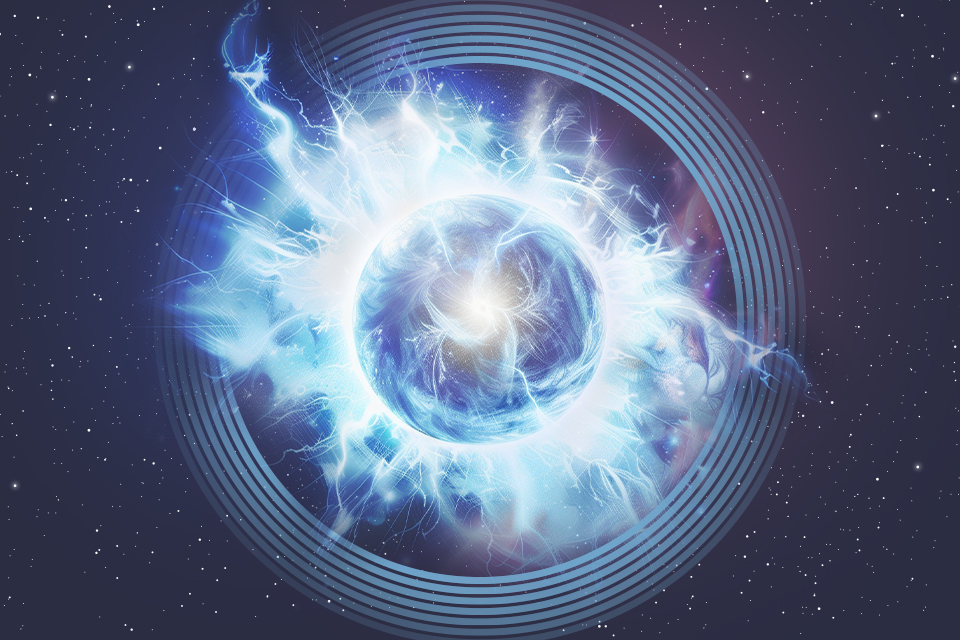
A neutron star
How are neutron stars formed?
Neutron stars are not lucky enough to have good PR. While black holes are on everyone’s lips, what people mostly know about their close relatives is that they exist and have extremely high densities. However, this is not the only interesting thing about them. To understand everything about these exotic objects, we need to start with their formation.
When a star with a mass at least 8-10 times that of the Sun ends its existence, it is at the stage of a very massive red giant or supergiant. Thermonuclear reactions inside it lead to the transformation of hydrogen and then helium into heavier elements.
However, the further down the periodic table an element is located, the less energy is released during its fusion. The star’s plasma heats up less and less and the gas pressure begins to yield to gravity. The core of the star, consisting of increasingly heavier atoms, begins to shrink.
At some point, iron is synthesised inside, an element whose nuclei have the highest binding energy and whose fusion does not release energy but absorbs it. It is then that thermonuclear reactions stop and the giant star explodes as a supernova. Most of its mass is ejected as a shock wave, a gas saturated with heavy elements. This substance forms cold protoplanetary clouds, in which a new generation of stars and planets are then born.
However, the core of the dead luminary remains intact. And its fate depends on its mass. If it exceeds the Tollman-Oppenheimer-Volkow limit, which is currently estimated at slightly more than two solar masses, the object will continue to shrink further until it turns into a black hole. Otherwise, it will become a neutron star.
What does a neutron star consist of?
About 3,200 black holes have been discovered in our galaxy so far. All of them weigh from 1.1 to 2.14 times the mass of the Sun, i.e. they are approximately the same size. The reasons for this lie in their internal structure. When a star is just preparing to become a supernova, the temperature in its core can reach an incredible 9 billion degrees Kelvin. Under these conditions, iron nuclei begin to break down, and then protons and electrons begin to fuse to form neutrons.
The core of the star turns into a dense pack of these particles with a density of .4×1017 kg/m3. For further compression, they need to be destroyed, and this requires extremely high gravitational forces. In fact, the conditions when a neutron nucleus can already form, but the gravitational forces are not yet able to destroy it, determine the above mass range.
At the same time, neutron stars are very small objects. Their diameter is about 10-12 km. And they do not consist entirely of neutrons. On the outside, they are assumed to have an iron crust about 1 km thick.
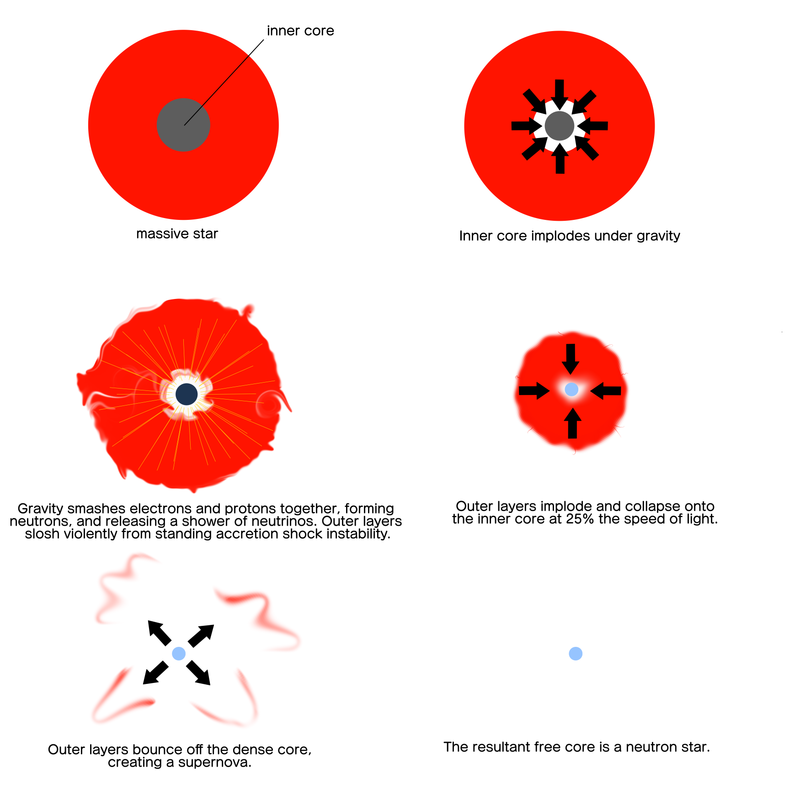
The formation of a neutron star. Source: Wikipedia
Another feature of neutron star formation is that it is this tiny object, which is very small compared to the original luminary, that receives most of its angular momentum and mass. This leads to incredibly high rotational speed of a neutron star and the emergence of powerful magnetic fields.
Properties of neutron stars
Magnetic fields are the first thing people think of when talking about neutron stars. Their power is truly impressive. They range from 10 thousand to 100 billion tesla (T). For comparison, a magnetic field of just 16 T in Earth’s laboratories is enough to make a frog fly.
The second feature of neutron stars that is often mentioned is their incredible density. Just one teaspoon of neutronium from their depths would weigh 900 times more than the Great Pyramid at Giza.
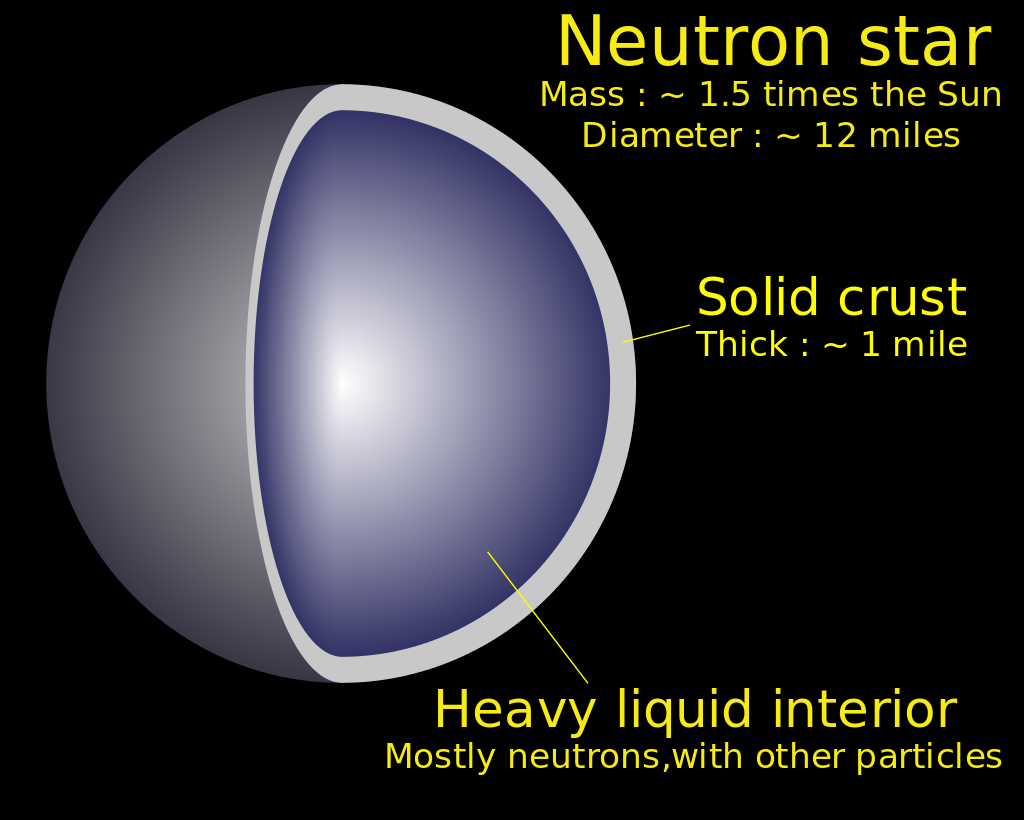
The internal structure of a neutron star. Source: Wikipedia
Another feature of neutron stars that is not often mentioned is that they are extremely hot. At the time of formation, their surface temperature can reach a trillion kelvin (K). However, within a few years, this temperature drops quite rapidly to 1,000,000 K, but then this process slows down. Therefore, over the billions of years of their existence, neutron stars remain among the hottest objects in the Universe.
The high surface temperature of neutron stars causes their radiation to peak in the X-ray range. As a result, it is almost impossible to see them with conventional telescopes.
Another feature of neutron stars is their powerful gravitational field. The force of gravity around them is much lower than that of black holes, but it is strong enough to tear apart any material object that comes closer than a few kilometres.
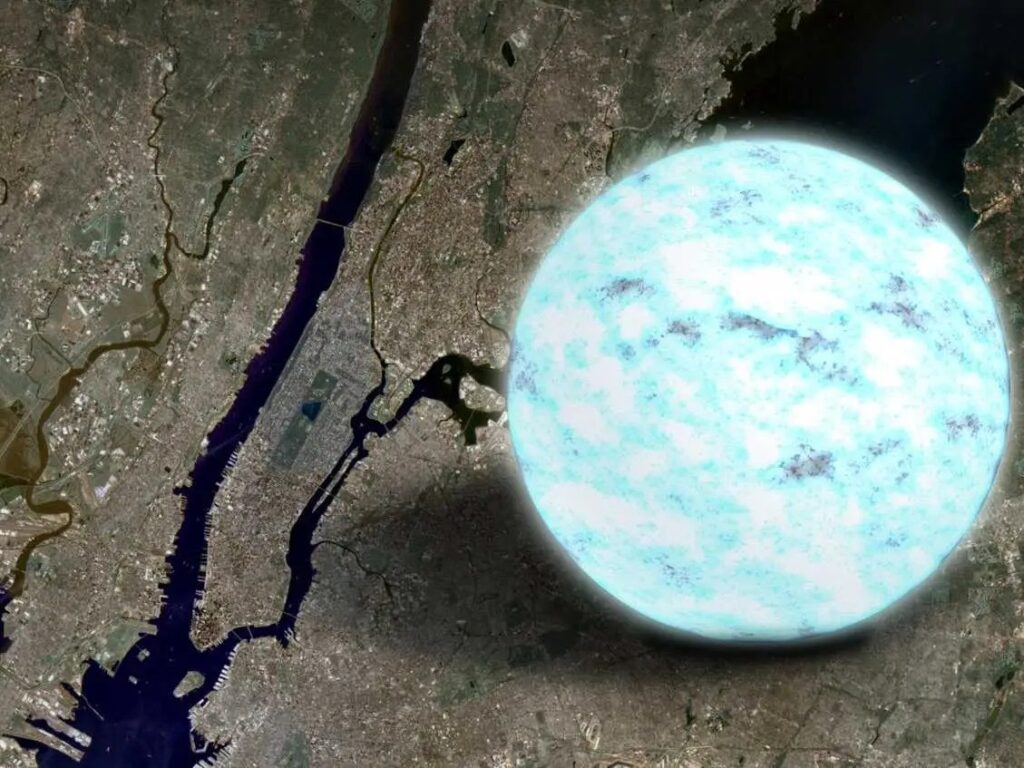
A neutron star compared to New York City. Source: www.businessinsider.com
But if we had survived and landed on the surface of a neutron star, we would have faced another consequence of high density: the effect of time dilation. For every 8 years on the surface of this object, a decade would pass on Earth.
Single neutron stars
Neutron stars can give rise to an extremely wide range of phenomena depending on the conditions in which they are found. The simplest case occurs when this object is alone and does not react with anything around it. In this case, it becomes almost as invisible as a black hole.
From a distance more than several light years it is visible almost exclusively in the X-ray range. It is quite possible that the vast majority of neutron stars in the Milky Way are of this type, but we simply do not see them.
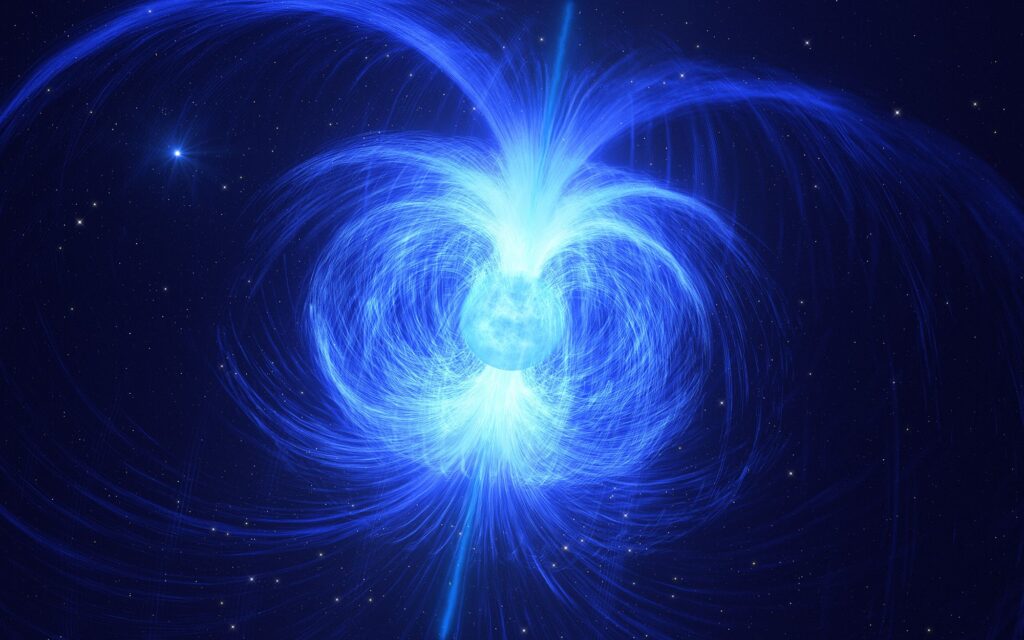
A magnetar. Source: edition.cnn.com
Another type of a lone neutron star is a compact central object inside a supernova remnant. It can also be seen only in the X-ray range, but the nebula itself, which appeared at the site of the star’s explosion, is clearly visible even in the visible part of the spectrum. So it is relatively easy to find them.
Another case of a lone neutron star is a magnetar. These objects are no different in mass and radius from the rest, but they have magnetic fields more powerful than 109 T. In such conditions, any particle located near them receives enormous energy and is emitted in the gamma-ray range.
Pulsars
The magnetic field of neutron stars is dipolar in nature, meaning that it has poles. And it is there that the most interesting processes take place. High-energy photons are created that interact with particles in magnetic fields and generate strong radiation in the radio range.
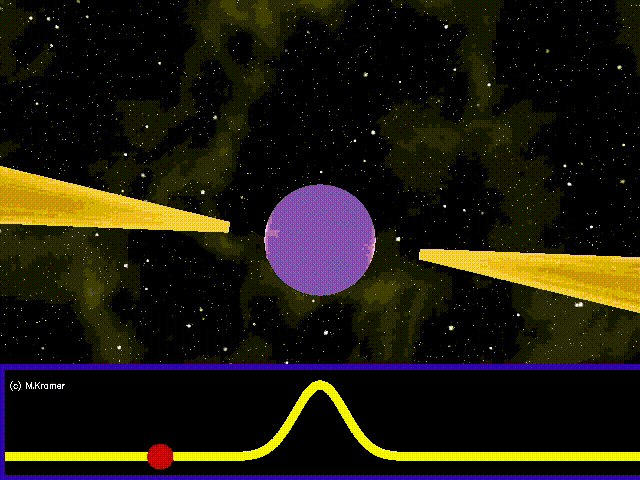
When the rotation axes of a neutron star and its magnetic field come together, this flux points to the same point all the time, and it is very difficult for an outside observer to notice it. However, sometimes there is an angle between them. Then the radio beam begins to go circles, and it becomes visible to a much larger number of observers.
Since the rotation speed of neutron stars is extremely high, the beam manages to return to the observer dozens or even hundreds of times per second. The effect of a signal repeating with an extremely clear periodicity arises.
We call such objects pulsars. The first neutron star discovered by scientists in 1967 belonged to them. At first, they thought it was aliens signaling to us in this way, but later they discovered the true nature of the object.
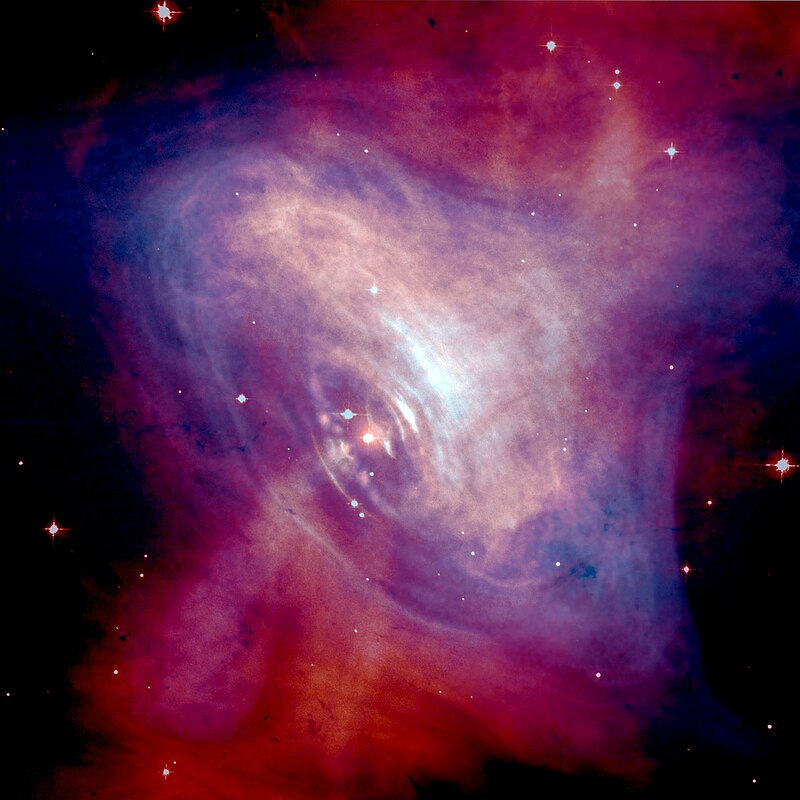
Magnetars can also have magnetic poles offset from the axis of rotation. In this case, it is called an anomalous X-ray pulsar. For an Earth observer, such a neutron star appears to be a source of high-frequency pulses that repeat at intervals of 2 to 12 seconds, with the period remaining unchanged.
Double X-ray stars
If a neutron star is part of a close binary system, then much more interesting things happen to it. There are several types of such objects, depending on which star forms a pair with the dead star’s nucleus. It can be any luminary, from a white dwarf to a supergiant.
However, the general picture in all cases is approximately the same. The neutron star pulls away some of the outer layers of the companion, and this gas forms an accretion disk around it. Gradually, it falls to its surface, which causes an increase in X-ray radiation.
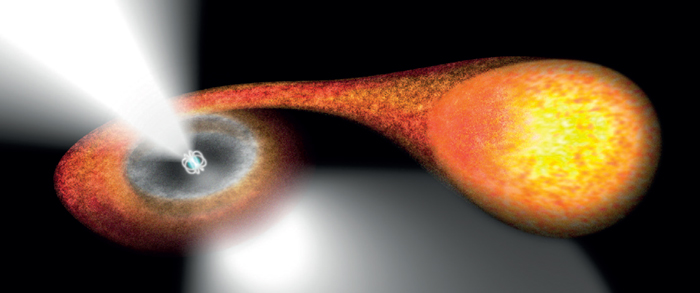
Such systems are a type of X-ray double star. Another type is pairs in which the companion of an ordinary luminary is a black hole. Scientists are very interested in studying such systems, because they are natural laboratories in which the peculiarities of the evolution of various space objects are revealed.
A special case of a double X-ray system is a millisecond pulsar. It is formed when a neutron star that is part of a pair has its magnetic field poles displaced relative to the axis of rotation. At the beginning of its existence, it behaves just like any other pulsar, with the only difference being that its beam is visible in the X-ray range in addition to the radio range.
However, over time, the impact of material from a neighboring star on the surface causes their rotation to be accelerated. The pulses become more and more frequent, until their period is reduced to thousandths of a second. This high rotation speed and precise periodicity are of great interest to scientists.
After all, millisecond pulsars can be used as gravitational wave detectors. When one of them, which is a curvature of space, passes through such an object, its periodicity is thrown off for seemingly no reason. In this way, even phenomena that are too weak for the most accurate ground-based observatories can be registered.
Star-quakes and transient events on neutron stars
However, the wonders associated with neutron stars do not end there. For example, from time to time these objects abruptly increase their rotation speed by a small amount. It is believed that this is due to the processes that take place inside them.
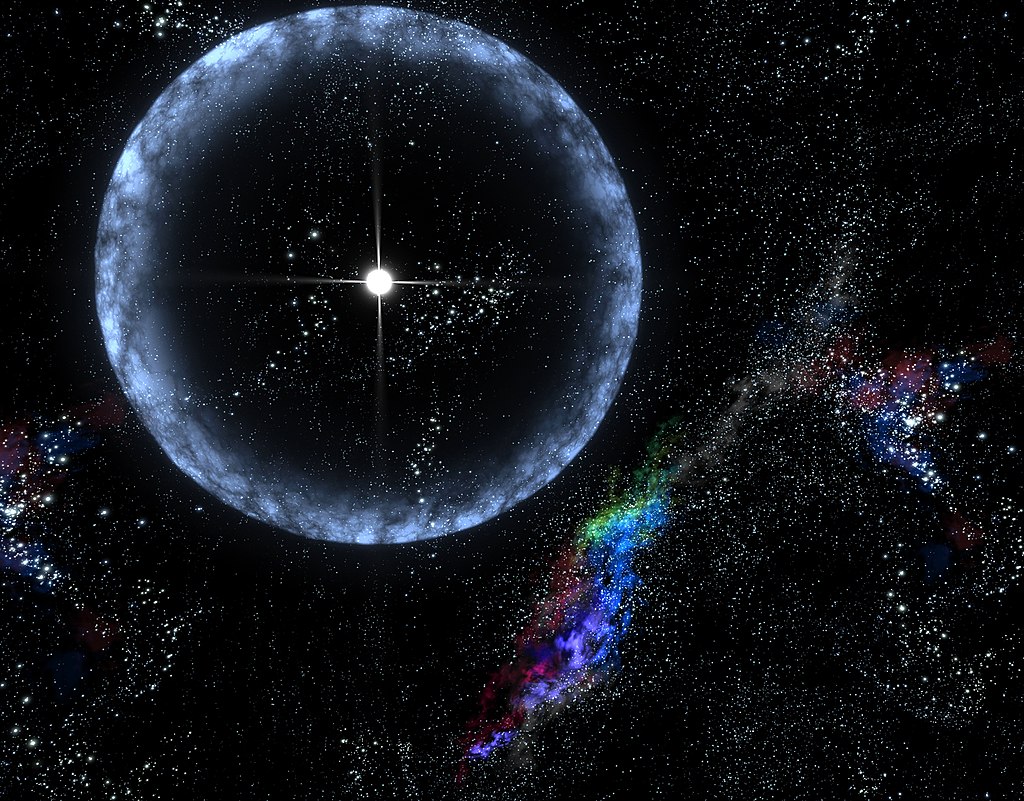
Scientists are still not sure what they are, because we know almost nothing about the internal structure of these objects. However, the most popular theory is that the neutron nucleus of these objects is usually in a superfluid state. Therefore, there is no friction between it and the outer iron crust.
However, from time to time, this state of affairs is disturbed and the crust is crushed. This results in a phenomenon similar to star-quakes, which are often observed in stars due to fluctuations in the magnetic field. In this case, the radius of the neutron star changes and the rotation speed increases.
In addition to changes in rotation speed, neutron stars sometimes experience much more dramatic events. Astronomers know of many events in the sky that last for seconds, hours or months. They are called transients, and some of them can be associated with neutron stars. An example of this is fast radio bursts — very powerful radio pulses that last only a few milliseconds and come to us as if from nowhere. Their most likely source is some processes occurring on magnetars or possibly pulsars.
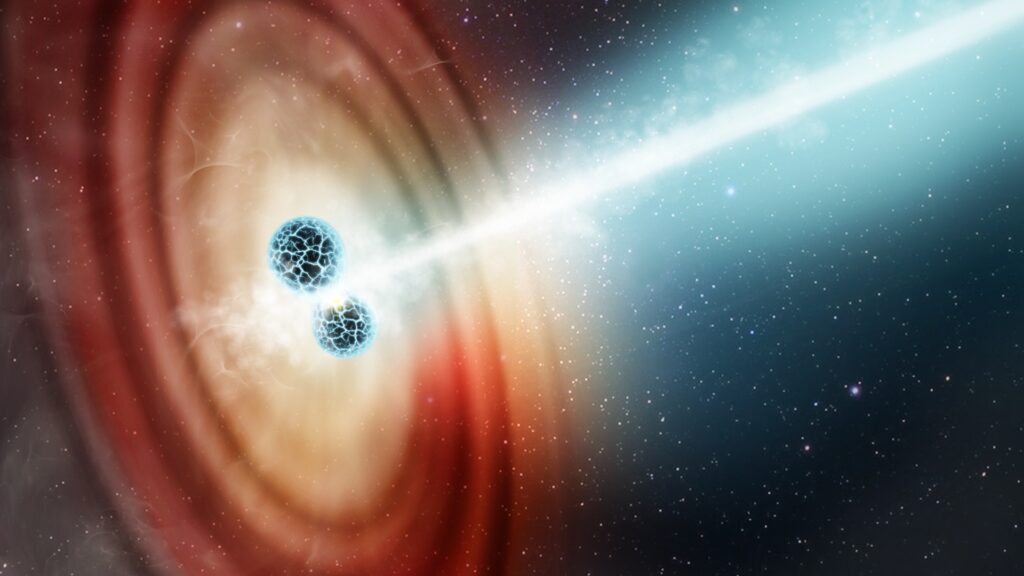
Another example of a transient associated with neutron stars is a kilonova burst. It occurs when two neutron stars or a neutron star and a black hole merge together. In this case, there is not only a flash of radiation in all spectra, but also the birth of gravitational waves.
Planets around pulsars
In addition to all of the above, neutron stars can have planets. In fact, the first three worlds outside the Solar System were discovered in 1992 in the pulsar PSR B1257+12.
Given that any neutron star is a supernova remnant, an interesting question arises as to whether such planets existed back when the neutron star was a normal world, or whether they were formed after the supernova explosion from its remnants; or maybe they are the remnants of a companion star or even orphan worlds that were captured by the pulsar’s gravity.
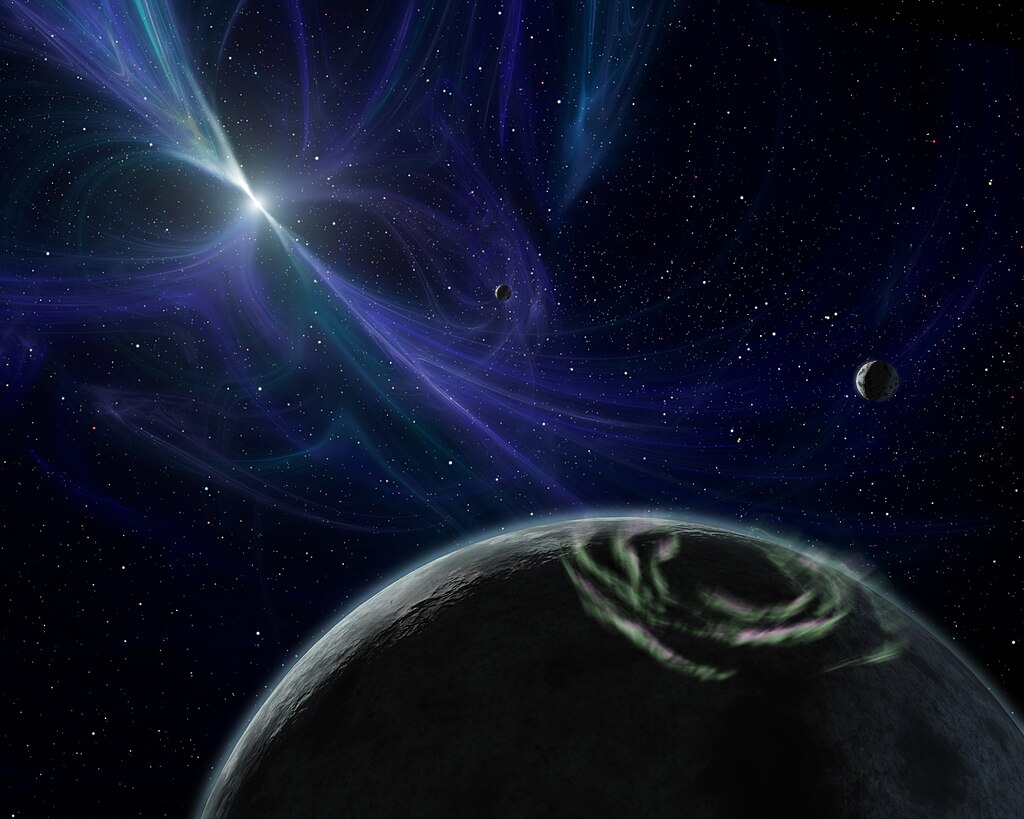
To date, scientists have not ruled out any of these versions for various known pulsar planets. However, specifically for the PSR B1257+12 planets, the probability that they could have endured a supernova outburst is considered very low.
How far away are neutron stars from us?
Neutron stars can frighten and fascinate people. However, there is one more important thing to know about them. They are located extremely far from the Earth. The fact that so many pulsars have been discovered is due to the fact that we can see them from a great distance. For example, the object discovered in 1967 is located at a distance of more than 1000, and PSR B1257+12, together with its planets, is 2300 light-years away.
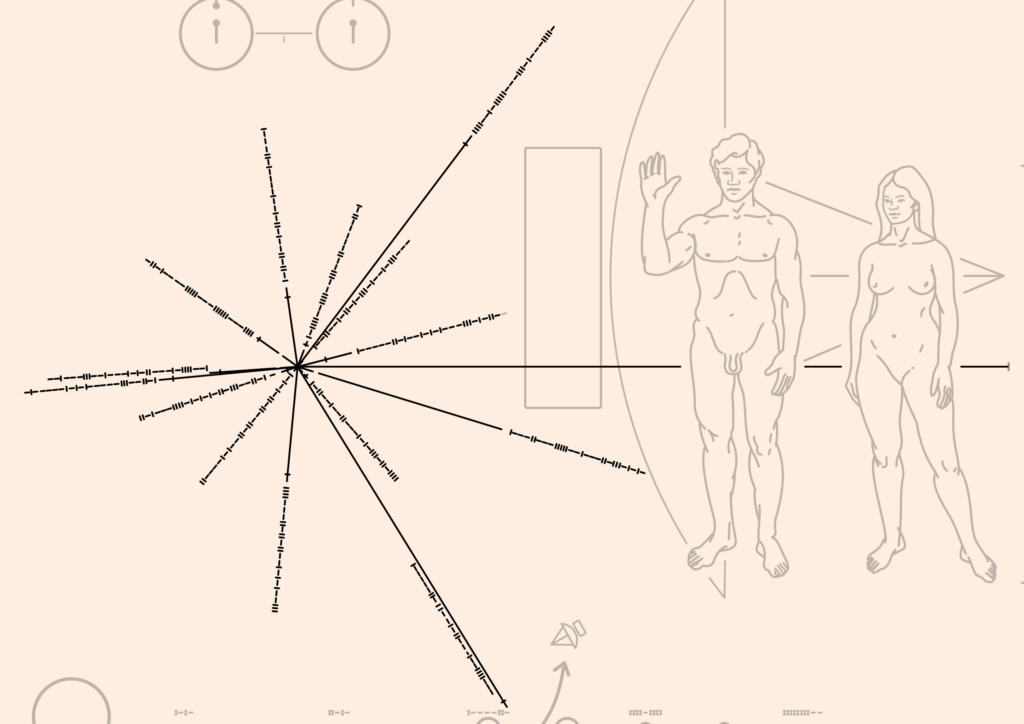
Magnetars and double X-ray stars, which can potentially pose a danger to us due to radiation, are even further away. Isolated “quiet” neutron stars, on the other hand, may be closer. In particular, the “magnificent seven” is a well-known group of objects located at a distance of 400 to 1600 light-years from us.
In any case, we are not likely to encounter any of these objects in the next few million years. Therefore, the extinction of humanity due to a rapid radio burst or a kilonova explosion is not expected either.

